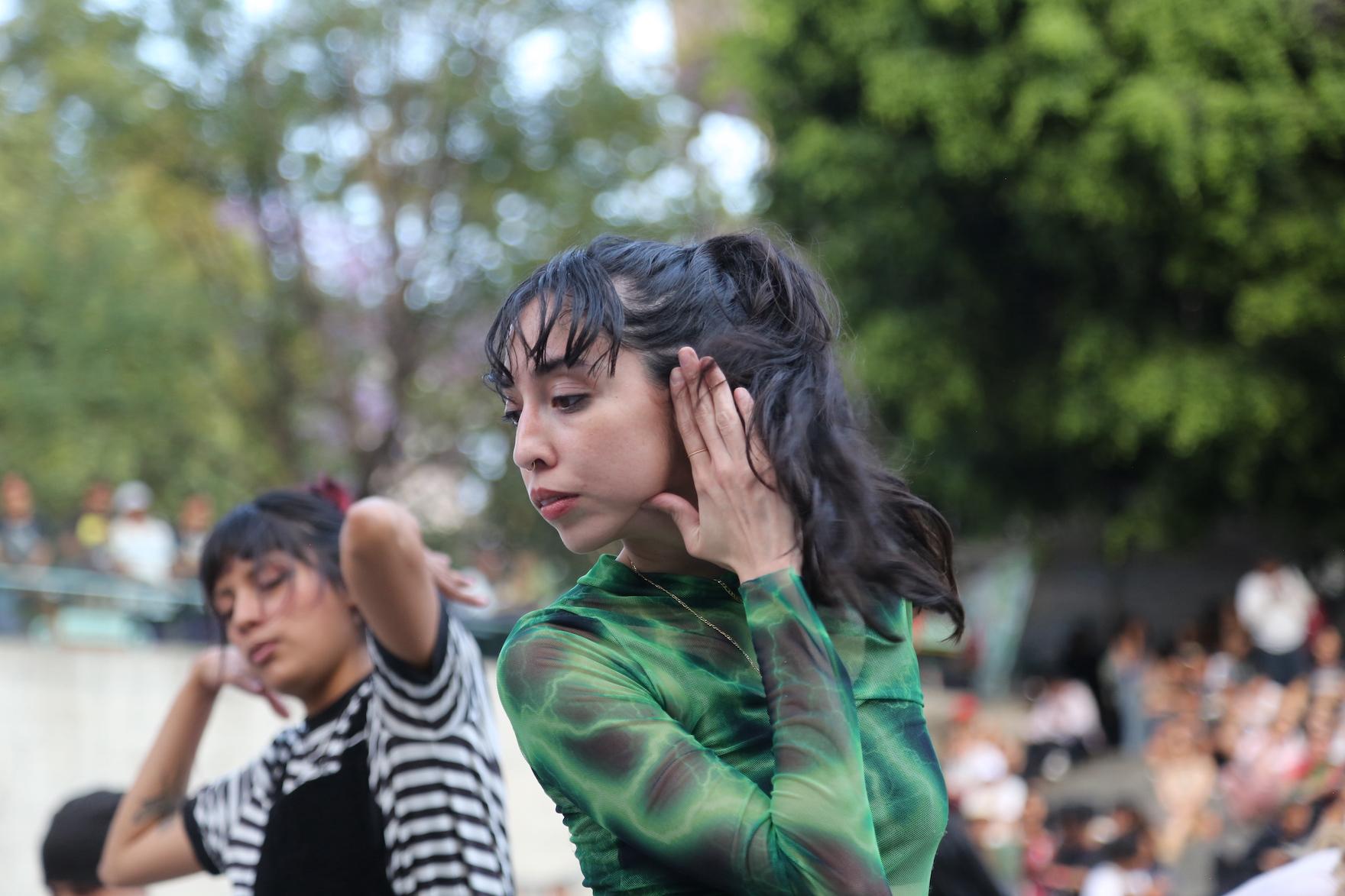
DERRUMBE, Camila Arroyo + Tell them not to kill me, 2023. Sourced via
When I first encountered Camila Arroyo’s work through the short film Soldaderas nearly four years ago, I was immediately struck by her ability to command space and express unspoken language in her movements. The short film for the fashion brand Sabrina Ol captures Arroyo as she navigates Mexico City’s streets. The film feels less like a performance and more like an intimate conversation with the environment, where movement, for her, was a private language that spoke to everyone, a pulse threading the soul to the surface of the world.
From the very start of our conversations, it became clear that Arroyo’s journey into dance was anything but conventional. “I don’t remember a time in my life without movement,” she shared. Her exploration of dance has always been driven by instinct and curiosity, pushing her to challenge norms and carve out her own path. From her initial resistance to traditional dance classes to her transformation through her time at the National Ballet School in La Habana, Cuba, dance became more than an art form—it became a lifelong practice, a devotion.
But her path didn’t stop at classical ballet. After graduation, she found herself questioning the traditional ballet company route. “I was unsure how to continue a career in dance that didn’t involve dancing for a company,” she confessed. This uncertainty led her on a journey of unlearning and rediscovery, delving into contemporary dance, performance theory, and a PhD in performance studies under André T. Lepecki. Her work, both as a choreographer and performer, blends these experiences, offering a unique and often experimental take on dance.
In her work, Arroyo masterfully weaves her personal history with broader cultural and societal themes. Her pieces, such as XV glitch and Partirse en Dos, blend Mexican traditions with contemporary reflections on issues like gentrification and identity. Through her choreography, she questions how space, identity, and movement intersect, inviting viewers to consider the stories that exist beneath the surface.
As we continued to explore her work, the Mexico City-based movement artist emphasized that space is never just a backdrop in her pieces—it’s a living, breathing part of the narrative. “Space is crucial in my work,” she says, explaining that the environments she dances in often become characters in their own right. Her films and performances push the boundaries of dance as a medium, urging us to rethink the role of the dancer as not only a performer but as an active creator and cultural thinker.
In this interview, Arroyo opens up about the conversation with dance that has been evolving throughout her life, how the early moments of movement have led her to discover her own language of performance, grounded in intimacy and slowness. We explore the role of resistance in her work, her sense of internal power, and the inheritance of culture that continues to shape her practice. She speaks of how her creative journey is inextricably linked to personal experiences of grief and change, highlighting the subtle yet profound shift in how she moves through these phases, not just as an artist but as a person navigating the complexities of life in a fast-paced world.
I am very interested in the dancer as a fugitive, political, and creative figure.
Were you the kind of child who would put on performances for your family? I imagine you as a deeply expressive child–was that the case?
As a child, I was deeply expressive but also deeply shy. I never performed in front of my whole family, but I would put on performances for my mom’s best friend. I would bring her to my room, play a Britney album, and dance my heart out. I took my dancing very seriously, so I would demand feedback. I remember once she said, “Um, maybe, move your shoulders more?” And I was like, ok, got it, shoulders. And would do it again, focusing on my shoulders.
How did dance first take root in your childhood and evolve through your adolescence?
My parents put me in dance class as a kid, and took me to see ballet or dance whenever they had a chance. I loved the performances, but had a hard time clicking with the dance classes. I got bored, thought it was corny, and I didn’t like the environment, even though I absolutely adored dancing. So I tried football for a while, but I wasn’t good enough and mostly wanted to play it because I noticed it was a gendered sport and I had an obsession with Bend it like Beckham. Later on, when I was about 12 years old, I was in a school play and fell in love with the experience. Somehow, that led me back into ballet that same year. Once I got back into dance, the school I was in took me to an intensive at the National Ballet School in La Habana, Cuba, and my life changed completely. Being in that school made me understand dance, training, and performance in a completely different way. I fell in love. I was devoted.
Back in Mexico City, I auditioned for a conservatory, and I trained pre-professionally in ballet during my teenage years. I was there 4-6 hours a day, Monday to Saturday. This conservatory had an exchange program with the Cuban National Ballet School, so I kept going back to train and perform in Cuba every year, from when I was 12 until I was 18/19 years old. After I graduated I was sure I didn’t want to be in a ballet company but I was unsure of how to continue a career in dance that didn’t involve dancing for a company, so the years that followed were a lot of trial, error, and unlearning what I had been taught about dance and its possibilities.
Was there a defining moment when you knew movement, art, and choreography were your calling?
I think there have been many moments that have defined or confirmed that this was my path. The first one definitely happened at the National Ballet School in La Habana, Cuba. I saw the practice and labor behind dance in a completely different way. I had been in places where dance belonged within this corny, puffy pink imaginary, and it was more like an unserious after-school activity, but being at this school with dancers who trained at such a high level, with such passion and commitment, was transformative. The sweat glistening on the dancer’s bodies, watching performances from the side of the stage before performing on the stage of Gran Teatro de La Habana, trying to do an acrobatic lift with a male dance partner over and over again, coming out of a dance class fully exhausted and laying on the school’s marble floor to cool down, observing every detail in every dancer’s movement. I understood dance as a lifelong practice, dance as devotion.
Later on, when I lived in New York City, I did a work-study at a studio called Peridance, where I did everything from cleaning studios to organizing the visa paperwork for the international students in exchange for free classes. I was studying my master's at NYU and babysitting and working, but I still somehow managed to train several hours a day, and did ballet, contemporary, heels, house, hip hop… it was a great NYC school of dance. I got to train with greats such as Leiomy Maldonado, Danielle Polanco, and Sekou Herou.
The other defining moments have happened at different points. Performing in Xavier Le Roy’s Retrospective at Museo Jumex in Mexico City was the moment I was introduced to performing within the contemporary art museum context, and collaborating with Xavier radically altered what I thought dance to be.
The last one has to be working and studying with dance and performance theorist André T. Lepecki, who is now my PhD advisor. His work on dance has changed the way I approach my practice, and is now shaping it profoundly as I write my PhD dissertation under his wing.
Coming from a place where dance is deeply embedded in Mexican culture, how have you embraced and redefined these traditions through your artistic approach?
In XV glitch, a video piece created during lockdown with my close collaborator, choreographer Ricardo Daniel, we tried to immerse ourselves in popular parties of different places where we couldn't go. We found ourselves watching hundreds of parties online that someone's uncle had filmed and uploaded to YouTube years ago. In particular, parties from Ricardo's hometown in Monterrey and my mother’s hometown in Guerrero. So we decided to green-screen ourselves into those parties we were obsessed with. So we had a party in our living room and we moved, danced, and interacted as if we were at these specific parties. A lot of these have traditional dances like the iguana dance, which is from my mother’s town, Tecpan de Galeana.
In another video piece I created titled Adagio de la Rosa, I edited a traditional quinceañera in the North of the country with the rose adagio from the Sleeping Beauty ballet danced by the Cuban National Ballet. I just found lots of similarities between the gendered dances and the gestures with the roses, so I created a sort of remix of both of them.
Beyond those pieces, I am not sure that traditional or regional Mexican dance permeates my work, but dance and movement in Mexican pop culture definitely do. In Partirse en Dos, a piece created in 2022 and revisited earlier this year by me and choreographer Ricardo Daniel, we touch a lot upon television in Mexico while we were growing up in the early 2000s. So in the audio of the piece, you can hear everything from ads, jingles, and voices of iconic characters. We perform with the Canal 5 “Al servicio de la comunidad,” which was an ad that played in between cartoons, showing the photos and last seen locations of disappeared people around the country. That last ad, for example, was incredibly impactful during my childhood. In between children's television programming, we saw photos of people who were missing. So it creates a strange juxtaposition of bodies, from cartoonish movement to the violence of a body that has disappeared. So in a sense, my context has shaped my relationship to the body, not necessarily through dance, but perhaps through an expanded notion of dance, movement, and choreography in which they can be found beyond the conventional world of concert dance.
Dance is unique in that your body is both the medium and the message, unlike other art forms that rely on external tools. Have you ever felt a disconnect between your internal emotions and your outward expression? What was that experience like?
Recently, I have been obsessed with the fact that dancers are the most self-referential artists, our bodies are our tools, our subjects, and inevitably inseparable from ourselves. I am working on a new piece that reflects on that. I am very interested in the dancer as a fugitive, political, and creative figure.
I have definitely felt a disconnect between my internal emotions and my outward expression. The research for my choreography and performance work rarely comes from an internal emotional place. Most often, it comes from questions and curiosities that I have towards a specific object, moment, situation, event, etc. So in that way, my work is often disconnected from my internal emotions. I try to keep them separate, even when my internal work always finds ways of permeating the work, even if it's subtle. However, when it comes to my dance improvisation practice, I would say my improvisation is permeated by my emotions. Improvisation is very generous because it gives you a good space to deal with obstacles. If I am feeling exhausted, depleted, I try to use that as a constraint to work within my movement. Like okay, I’m feeling down, perhaps I need to move slower, smaller, or perhaps I can isolate and work mostly from my arms. Often, when you approach disconnect as a tool, it can be very fruitful. Playing with disorientation and a type of not-knowing is always worthwhile. At times, it's just frustrating, but always worth exploring.
In those moments of misalignment between your inner and outer self, what have you learned about yourself, and how has it shaped your craft? Does this happen often?
Misalignment is felt, but rarely, as an obstacle. I feel misaligned often, but consistency and routine really help me sustain a rigor that helps me show up even if my inner self is feeling misaligned. I rely on stubbornness, insistence, and curiosity.
Unlike a painter, who can step away from the canvas for perspective, you are inseparable from your body. When facing creative roadblocks, how do you recalibrate and dig deep to fully express what you want to say?
My recalibration includes training and moving my body, and taking dance classes that I haven’t taken before or haven’t been to in a long time. Going to a ballet class always brings me home. I have so many folders of videos that inspire me, and I often go back to them. Reading and writing have always been practices that help me reflect and recenter. I have several journals with writing, drawings, and random notes. Browsing my bookshelf and just sitting with a book I haven’t browsed in a while is great for my practice, too.
Often, I also recalibrate by giving my full attention to a project with a different physicality. Right now, having my dissertation allows me a back and forth, from work that is very physical and social, to work that is quieter and isolating. I need both.
I think it’s incredible that dance is invested in the materiality of flesh and muscle and how they move in the world and still escape our grasp. I find a richness, tenderness, and intensity in those moments that escape, that are hard to document and archive. There is also the political and anti-capitalist beauty of that ephemerality
Your identity, cultural, personal, and environmental, intertwines with your work. How do you balance staying authentic to yourself while also exploring broader themes and questions?
Authenticity for me at this point in my life is related to honesty. I need to be honest with myself and others about whether I am really interested in exploring specific themes or questions. I need to feel some interest, curiosity, disgust, love, obsession, something. Even if the feelings are unclear but strong, that’s when I know, intuitively, that I can explore them. But if for some reason that is not there, I try to avoid it.
In your recent short film, Ahinco, the contrast between the urban environment and the remote grassland in the intro and outro creates a striking dynamic. How does the environment shape your work?
The environment in my film work is very important. So far in my films, I like to use spaces that already exist, and have a life and purpose outside of the film, and my work is to intervene in them. I treat it almost as a site-specific performance. Some spaces leave impressions on me, and then when I think of a piece, these sites come back into my mind.
This has happened organically, but it is also helpful since I’ve done my film work with very, very small budgets. So we are not creating spaces with an art department. It’s more guerrilla-style interventions.
In Ahínco, I used a space that is very familiar to many people in Mexico City, which is the sculpture center/garden of UNAM, as well as a home that is in the midst of construction that a group of artists has been activating as a cultural space. In Soldaderas, we used a friend's home, the patio of a dance studio I work at, the market I go to where I buy groceries and do my nails, and a seafood restaurant I often visit. All the locations were within walking distance in the same neighborhood, so for me, the film was also like a day in my life. In OME, I was saying bye to NYC after living there 8 years, so I filmed on the rooftop of my Bushwick apartment, on a playground, around my neighborhood, and at Rockaway Beach.
Do you view the environment as a character in your work when creating a piece?
In my film work, environment is definitely a character, and in my choreographic performance work, I think of it as another element. Site is always important both conceptually and materially. It informs the work profoundly, in ways that often transform the work. I have performed in the street, in squash courts, in museums, in theatres, in diy cultural spaces, etc, and every time space has both informed the work itself, the performance, the choreography, and the audience. Choreography is the event of movement, organization, and relation in space and time, so space is crucial in my work.
Are there moments when you consciously aim to challenge societal norms or protest certain ideas in your work? Considering how your practice intrinsically weaves together feminist ideals and cultural preservation.
Yes, definitely. Sometimes in more literal ways than in others. In Partirse en Dos, we point to the neo-colonial gentrification of Mexico by Americans and Europeans. Other pieces may not have a literal political message, but they are always being created from a feminist Latin American perspective. Lots of my pieces have subtle critiques of the dance world, as in how it has been configured, particularly in Mexico.
Is there a particular piece where you feel your truest self is fully represented in the storytelling while also investigating a specific theme?
My truest self is always evolving, even if my essence remains the same. Each piece has captured, even if in abstract ways, the truest self that existed in the specific time and space of that creation. Even in Ahínco, which is my most recent piece, I can see aspects of myself that were true for me when we filmed it or edited it that no longer feel so close to who I am today. Pieces are like time-stamps in that way. That is why, when I revisit performance pieces, I always allow them to change and transform. If I created and performed a piece in 2021 and revisit it in 2025, something always changes because I have new questions, new studies, and new curiosities.
Are there times when you intentionally distance your identity from your work, or is it always inherently intertwined? Do you take on different characters in your creative process, and if so, what does that look like?
I don’t take on characters in my creative process, in the sense that I don’t build them in the way an actor would. When I’m performing, I’m not myself, but I am also not-not myself. It’s a complex construction between being my performing self, in which I think I do distance myself somehow from some parts of me, but I also access other parts of me that are very much mine, but that perhaps I can’t access without performance. In that sense, I don’t distance myself from the essence of who I am, even though I rarely explore myself in my work. However, in my new piece Como agua en agua, I think it demands an exploration of my choreographic history, so I’m excited to see what happens.
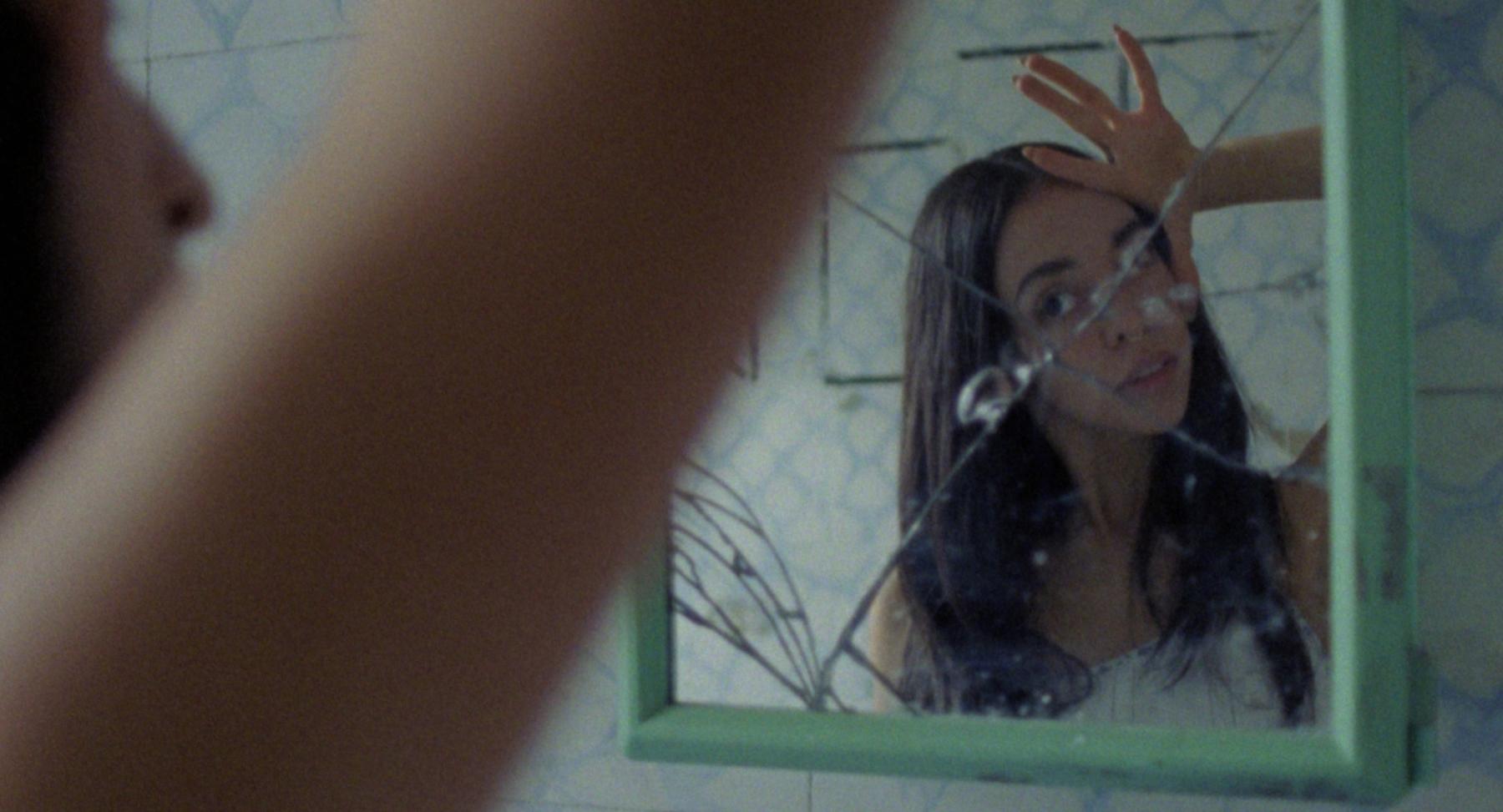
SOLDADERAS, 2021, film still by camila arroyo
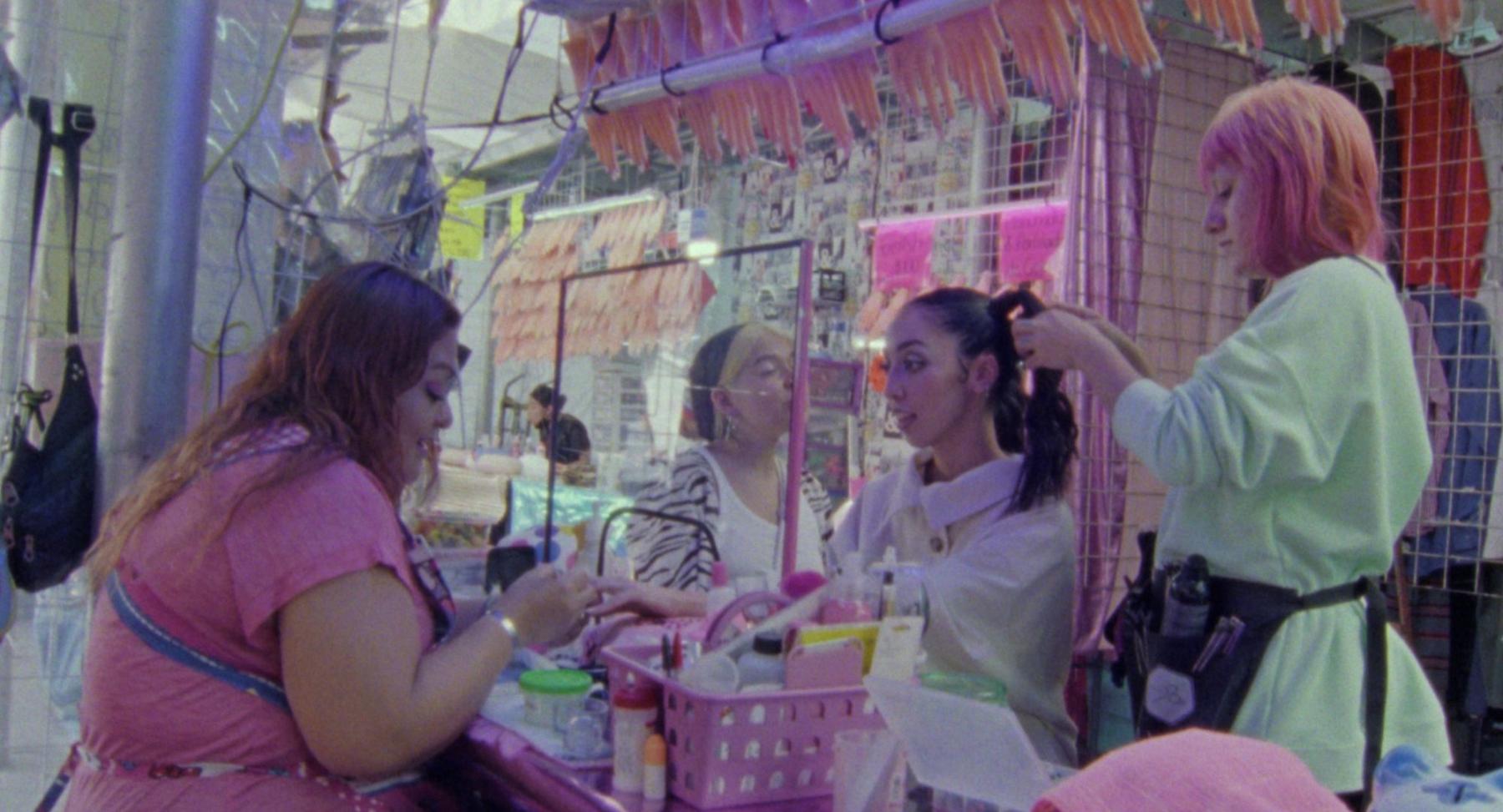
SOLDADERAS, 2021, film still by camila arroyo
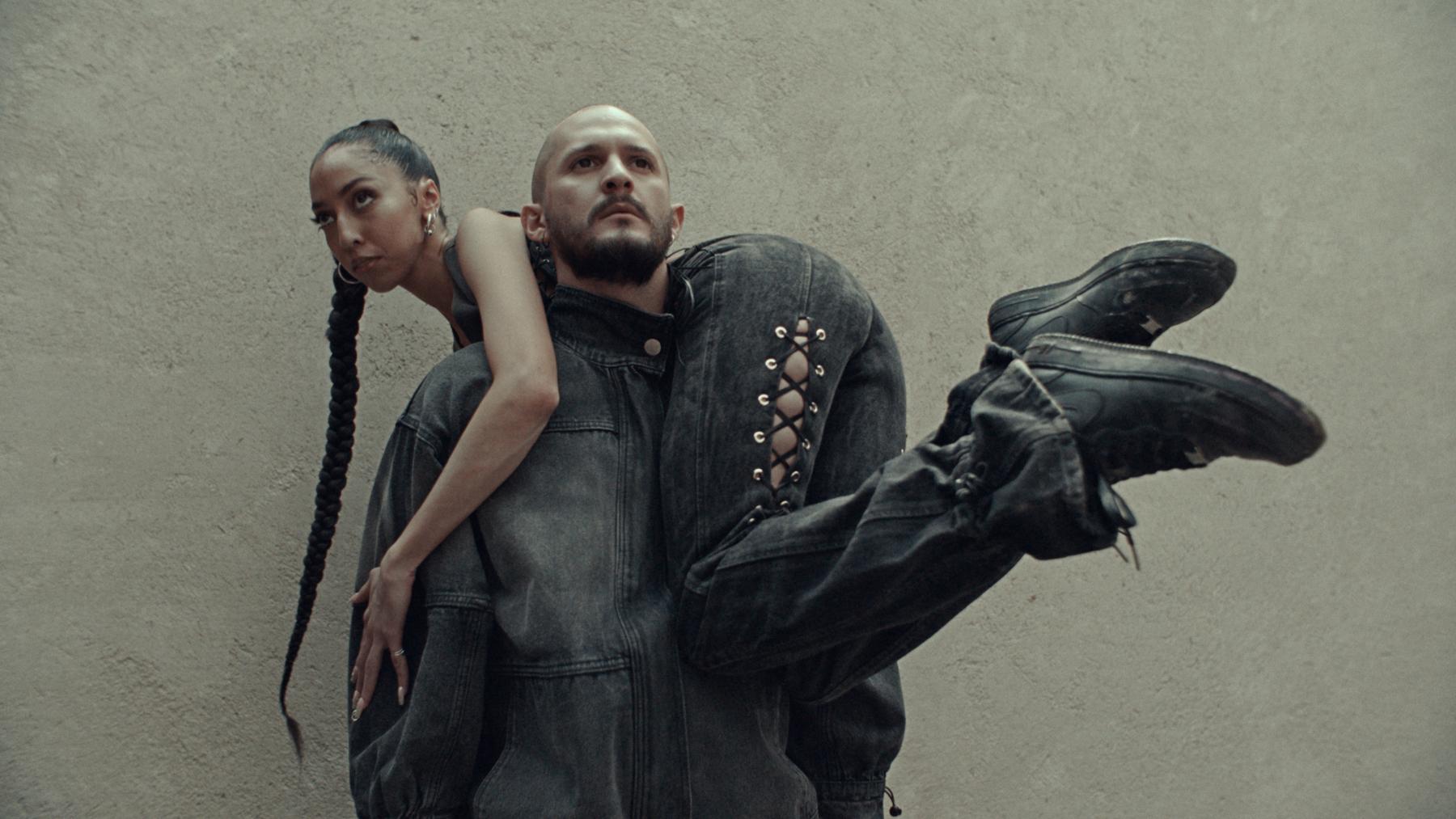
AHíNCO, film still by camila arroyo
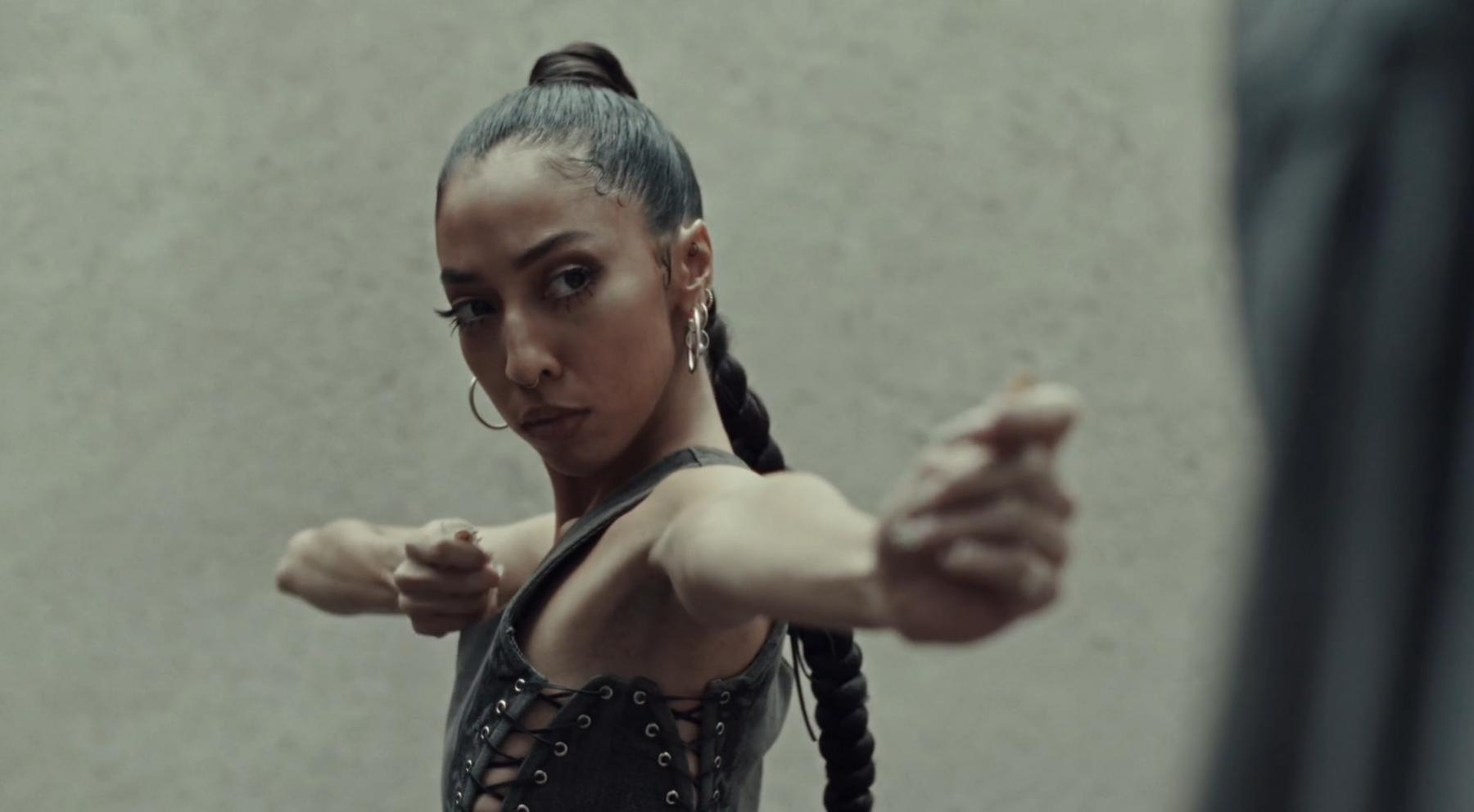
AHíNCO, film still by camila arroyo
I’m drawn to your practice because movement is so emotive and fleeting if not captured or documented. Do you find documentation of your craft necessary all the time, or are you someone who bathes in the ephemeral?
Dance and performance will always have a complex relationship to documentation and the archive. Its ephemerality, the inevitability of it, but also the other ways in which performance remains beyond the event are all important questions within the field of performance. Personally, I love documentation, and I am constantly writing, noting, and filming myself and my work. However, some things happen within the ephemerality of performance that are impossible to capture, and that I hope remain elusive and fugitive. I think it’s so incredible that dance is invested in the materiality of flesh and muscle and how they move in the world and still escape our grasp. I find a richness, tenderness, and intensity in those moments that escape, that are hard to document and archive. There is also the political and anti-capitalist beauty of that ephemerality. It’s so hard to circulate the ephemeral in a market, even when our current climate is trying to package and sell experience. Performance will always avoid being captured, but in a way, it will also always remain, somewhere, somehow, imprinted on us.
I am working on a new piece that deals with this a little bit. I wonder where all the choreographies we learn as dancers remain? How do they remain in our bodies? How can we give them an afterlife? Centering the notion of the dancer as one’s medium, in my piece Como agua en agua, I think of the dancer as a subject that can grant performance and choreography an unplanned afterlife. Dance is considered ephemeral and fleeting, particularly when choreography is created and performed for a specific event. This piece follows performance theorist José Esteban Muñoz and proposes that choreography, and therefore performance, exist and persist beyond the event. Como agua en agua proposes that choreographic afterlife persists through the body of the dancer.
How do you find the connective tissue between the various artistic mediums in your practice? How do directing, choreography, and dance elevate and communicate with one another in your work?
Since I didn’t have a traditional contemporary dance education, it comes quite naturally to me to find different mediums depending on what a piece needs, or what I’m looking to explore. While being in ballet school, I never quit regular schooling, and I always had other strong interests in visual arts, writing, and film. After ballet school, I didn’t think I was going to keep dancing or that I would dance professionally, so I studied lots of other things and crafted a parallel academic life and career that keeps me thinking with dance but also away from dance. So I’m used to being in a liminal space in my practice and thinking. Dancers consider me someone who moves more in performance and the visual arts, while in performance, film, and the visual arts, they consider me a dancer and choreographer. In academia, everyone sees me as a dancer with a strong practice, and most dancers don’t know I am in the midst of writing a PhD dissertation. So I’m always inhabiting the in-between.
My practice always thinks and advocates for dance and choreography as expanded fields of practice, and dancers as powerful figures filled with potential. I believe that dance and choreography are yet to be explored beyond the limits that the professionalization of contemporary dance has established. Dance and choreography are needed for me to relate to film, and film is needed for me to understand dance and choreography, and the same goes for theatre, literature, performance, critical theory, painting, and sculpture. Dance and choreography are like starting points for me; they are my foundation, but I always crave other mediums, other forms, other ways in which dance, choreography, and movement exist and affect things.
If there is an ultimate message behind your craft, what would it be? What do you hope to leave with the viewer?
I am not sure if I have a specific message, but I hope people experience a profoundly moving event. I hope the event of the performance, text, or film leaves an imprint on them. That the movement creates or stays beyond the event.
My wish is also that my work opens up an understanding of the power of dance and choreography. To study, create, think, feel, and perform dance in different circumstances and environments. To move it away from how institutions have structured and petrified it. This also includes the dancer. The dancer is rarely understood as a complex figure charged with world-changing potential. Critical theory and visual arts center the body in their discourses, but always forget about the dancer, the one figure devoted to understanding the body. My work seeks to explore the figure of the dancer and focuses on them as a subject with particular critical and creative capabilities that are wrongly overlooked. The dancer’s promise is most often read through a short-sighted idea that forms the dancer as a stable, dependable, trained body with no critical capacity that absorbs, repeats, and executes information by way of a codified technique or movement language. A dancer’s devout practice deserves greater generosity, one that considers their practice as an opening, rather than rendering their potential locked, petrified, or unmovable.